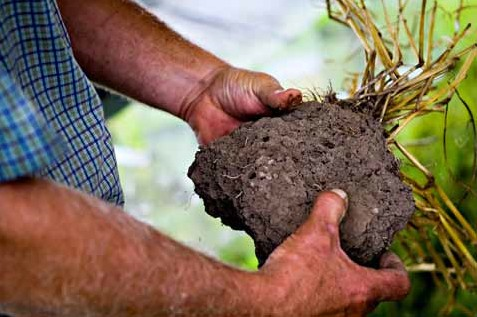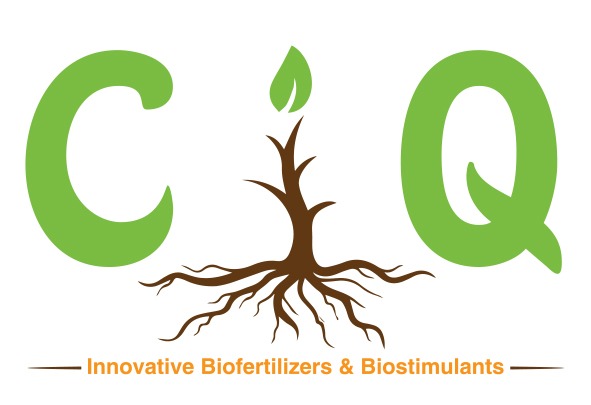Nematode is the most destructive group of plant pathogen feed on crops roots, reducing the plant ability to uptake water and nutrients  and responsible for heavy yield crop loses in fruits and vegetables all over the globe and the control is extremely challenging.They attack a large variety of crops worldwide and the impact on yield losses has been estimated to a billion euros annually.
and responsible for heavy yield crop loses in fruits and vegetables all over the globe and the control is extremely challenging.They attack a large variety of crops worldwide and the impact on yield losses has been estimated to a billion euros annually.
Plant parasitic nematodes attack their host by using a wide range of strategies. They can be ectoparasites, that feed on the outer plant tissues or endoparasitic that feed and live inside the plant tissues. Injuries resulting from Nematode actions invited further invasion by pathogens like fungus and bacteria causing more damage and ultimately reducing the quality and quantity of your crop.
Historically, management of nematode induced crop damage has been achieved with the utilisation of plant resistance, crop rotation and other cultural practices, or chemical nematicides.
The development of new nematicides is a difficult task, because most plant parasitic nematode species spend their lives in the soil or within the plant roots, the chemical nematicide often resides at a fair distance away from the site of application of the chemical. Moreover, the nematode cuticle and other surface structures are impermeable to many organic molecules. Consequently, most nematicides tend to be rather toxic or volatile, with poor target and less than perfect for human or the environmental, such as groundwater contamination or atmospheric ozone depletion.
Therefore, only a few chemical nematicides remain, and many of these lack broad spectrum activity or efficacy of the same magnitude as that of soil fumigants.
Let’s look at general characteristics of Plant Parasitic Nematodes:
Are microscopic roundworms unseen to the lignite, survive in soil and plant tissue, feed on plant tissue and damage the rootsystems. Strategies of attacking their host can be Ectoparasites “exteral feeding” or Endoparasitic “Internal feeding”. Reduce the ability of plants to obtain water and nutrients need to be properly identified before treating and it requires a season long approach for full control.
Symptoms and signs of attacked the Nematode:
Above Ground Symptoms: Nematodes that feed on the roots cause above ground symptoms that are similar to those resulting from many kinds of root injury. Foliage loses its luster and wilts, prolonged root  stress caused by nematodes may result in yellowing and eventual loss of foliage, new flushes of growth are stunted and weak, with fewer and smaller leaves. Plants tend to wilt more readily during low water or drought conditions than non-infested plants. The damage is usually distributed irregularly, since nematodes are rarely distributed evenly in the soil.
stress caused by nematodes may result in yellowing and eventual loss of foliage, new flushes of growth are stunted and weak, with fewer and smaller leaves. Plants tend to wilt more readily during low water or drought conditions than non-infested plants. The damage is usually distributed irregularly, since nematodes are rarely distributed evenly in the soil.
Root Symptoms: root symptoms vary widely. Some kinds of nematodes cause tissues on which they feed to grow strangely (root-knot and some foliar nematodes) some stop the growth of the roots, others kill the cells on which they feed as they move through the roots, leaving patches of dead tissue as they move on. Depending on the kinds of nematodes involved, damage may include galls, stunting, and decay of roots and infested roots are often darker in color than healthy roots. Fungi and bacteria which cause root rot, wilt, and other plant diseases often infect nematode-damaged roots earlier and more severely than uninjured roots. Some viruses can also be transmitted by nematodes.
Conventional Management strategies:
Chemical controls
Most chemicals that have historically been used for nematode control or suppression are highly toxic and have very limited uses usually involving soil sterilisation before planting. In addition, these chemicals have often been recommended only for crop production or other commercial uses and a few, if any applications in landscape plantings. Such chemicals will kill not only nematodes but also plants and can be used to fumigate soil when renovating lawns or prior to planting landscape beds. However, this is a toxic material that can be harmful to beneficial soil organisms, and alternatives should be carefully considered before use.
In the past 20 years, several nematicides have been withdrawn from the market because of health and environmental problems associated with their production and use. As a result of this, there has been increasing public concern over the use of pesticides in food production
Biological control:
Biological control is more inconsistent, less effective and slower acting than normal control achieved using chemicals, it has proved to be difficult to develop a biological control agent that is effective worldwide for any soil-borne disease
Current experience suggests that biological control agents will not replace the use of nematicides but, integrated with other control measures including chemicals, they could play an important role in the development of integrated control strategies in both developed and developing agriculture.
Crop IQ Technology is pleased to announce  , a triple action, curative and preventative natural nematocide. This novel product consists of a unique blend of five essential Natural oil extracts which contain nematocidal compounds, unsaturated fatty acids, green chemicals and bio stimulants. It is the first novel Nematocide on the globe combining the advantages of chemicals and natural products in one formulation with ZERO residuals, No wait and No PHI.
, a triple action, curative and preventative natural nematocide. This novel product consists of a unique blend of five essential Natural oil extracts which contain nematocidal compounds, unsaturated fatty acids, green chemicals and bio stimulants. It is the first novel Nematocide on the globe combining the advantages of chemicals and natural products in one formulation with ZERO residuals, No wait and No PHI.
For more info contact us: info@cropiqtech.com











